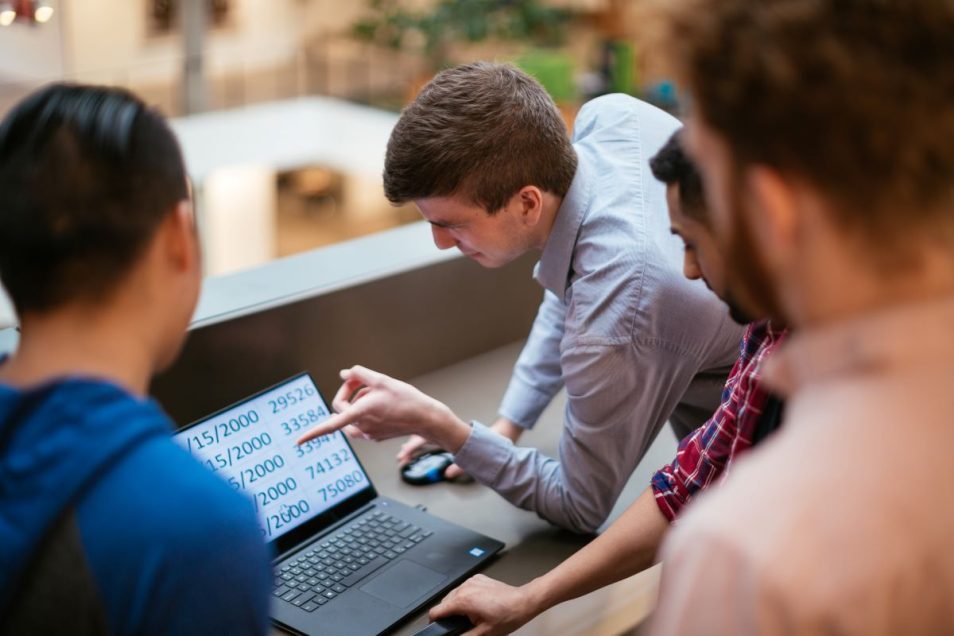According to the World Health Organization, more than one billion people worldwide live with some form of disability. That number is constantly increasing due to a rise in chronic health conditions and population aging. Whether disabilities are temporary, situational, or permanent, they prevent people from fully participating in a world designed without their needs in mind.
Accessibility is responsibility and opportunity. Only 1 in 10 people experiencing some form of disability have access to the assistive technology they need, which means many can’t fully participate in our economies and societies. The unemployment rate for people with disabilities is typically twice that people without. And disability, whether temporarily, situational or permanent, can affect any of us at any time. On the other side, inclusive organizations that embrace best practices for employing and supporting persons with disabilities in the workplace outperform their peers. They also attract and keep top talent. Millennials choose employers who reflect their values and to them diversity and inclusion is on top of the list.
Accessibility means something different to everyone. From the types of accessibility, people encounter daily such as wheelchair ramps, signs with braille, or closed captions to compliance standards in a professional setting. However, the real goal of accessibility is to provide people the freedom to pursue their own dreams and goals. It ensures that all people can fully enjoy the products, services, and surroundings.
Technology can unlock solutions that empower people with disabilities and lead to greater innovations for everyone. To enable transformative change accessibility needs to be a priority.
At Microsoft, we are passionate about creating products that help people with disabilities unlock their full potential at work, school and daily life. It extends to the culture of our workplace and weaving accessibility into the fabric of our company—from hiring people with disabilities, to creating inclusive marketing, and awarding our Accessibility in Action digital badge.
In today’s workplace it has never been more important to include everyone, and accessibility is the vehicle to inclusion. We talked with Microsoft professionals about accessibility.
Accessibility has never been more important
With COVID-19, focusing on accessibility is more important than ever. Since then, the disability community has been disproportionately impacted by unemployment and challenges with remote education. The pandemic has amplified the even higher need for people to have access to assistive technology at home, school, and playground.

“Coming from a mother who is a child psychiatrist, ever since my childhood, I’ve been seeing her being deeply passionate and committed to helping kids. From her, I’ve learned a lot about kids with ailments. During the COVID era, it became abundantly clear that children with disabilities who are not integrated into society are seriously falling behind in their studies and are not engaged in the educational process. Everyone has a right to equal learning opportunities; therefore, many solutions should be implemented into everyday use, such as, for example, immersive reader and reading progress that helps kids and adults with dyslexia,” said Diana Ghazaryan, Industry Executive for Education at Microsoft.
Disability is extremely diverse. More than 70 percent of disabilities are not visible, with autism, learning difficulties, and mental illness as examples of acquired disabilities. Open discussions regarding disabilities are crucial for every organization and business. At one point in the life of every employee, they may need additional services and help from technology or people in the company.

“It is hard when you don’t fit in, and you don’t know why. My older sister is a person with autism, but she was diagnosed when she was already an adult. Our generation didn’t talk about autism, but it doesn’t mean we don’t have autistic people. It’s essential to be aware. People should not have to try to adapt themselves to fit in. We need to make space and adapt to everyone, and that’s also Microsoft’s mission, to empower everyone on the planet, no matter if they have disabilities or not. We need to help build a world where everyone can triumph. The first step to achieving it is by educating ourselves. At Microsoft, we make a conscious effort to educate ourselves on accessibility and expand our knowledge, earning the Accessibility in Action Badge,” explained Isabela Cardoso, Employee Skilling Lead at Microsoft.
Create excitement about building accessible experiences

The underlying goal of technology is to enable people to achieve more, which is why persons with impairments should be equal users of solutions. Thinking about people who face more obstacles at school or work when using technology may benefit and contribute to their daily lives and professional development.
“Inclusive Design is personal to me. As a Neurodiverse designer with dual arm paralysis, I thrive with the help of accessible computers, software, and physical spaces. I’m not the only one who benefits from accessible experiences, as 20% of the world identifies as having a permanent disability. It is everyone’s responsibility to use inclusive design methodology to build inclusive and accessible experiences”, said Christina Mallon, Director of Inclusive Design at Microsoft.
“A few years ago, I broke my arm. And just like that, I couldn’t type on my PC. Then I realized that disability is not that far from anyone. At a younger age, I looked up to my cousin who is deaf. I realized that understanding sign language was a skill I didn’t have, and I admired him for that. These are the reasons I want to be a part of the story about enabling everyone to use technology, as well as helping in any other way I can to overcome those disabilities,” said Vedran Solaja, Integrated Marketing Lead at Microsoft.
Enabling people to accomplish their goals is what accessibility is all about. Additionally, innovation in technology and AI can add a layer to personalize the demands of each person. AI has the power to alter the possibilities available to persons with impairments and help highlight their talents. Companies using solutions with built-in products are creating equal experiences for everyone.

“There are some useful ways to think about accessibility, and every person can start to imply them in everyday use. Tools such as an accessibility checker are built into every app of Microsoft solutions. Understanding that the produced content is accessible to everybody is a big step forward. We can always ensure that every image we use in our texts or presentations has a description behind it, or we can avoid strange fonts or some light color letters that are not visible. Also, turning on the live captions and adding subtitles to our Teams meetings can be of much help for someone, and it’s just one click away. Making it clear that the content is done that way and proposing other accessibility features can be useful for the people who need it. I have been doing it and suggesting my team do it as well. A start from simple solutions can truly make a change,” added Vedran.
There is much more to learn. As more people experience some form of disability in their lives and among those around them, companies continue to strive to foster a safe environment and welcome a culture where everyone can bring their authentic selves to work, inclusive of their disability.
To learn more:
Microsoft Accessibility Blog – Making technology easier to see, hear and use!
Accessibility Resources & Training | Microsoft Accessibility





